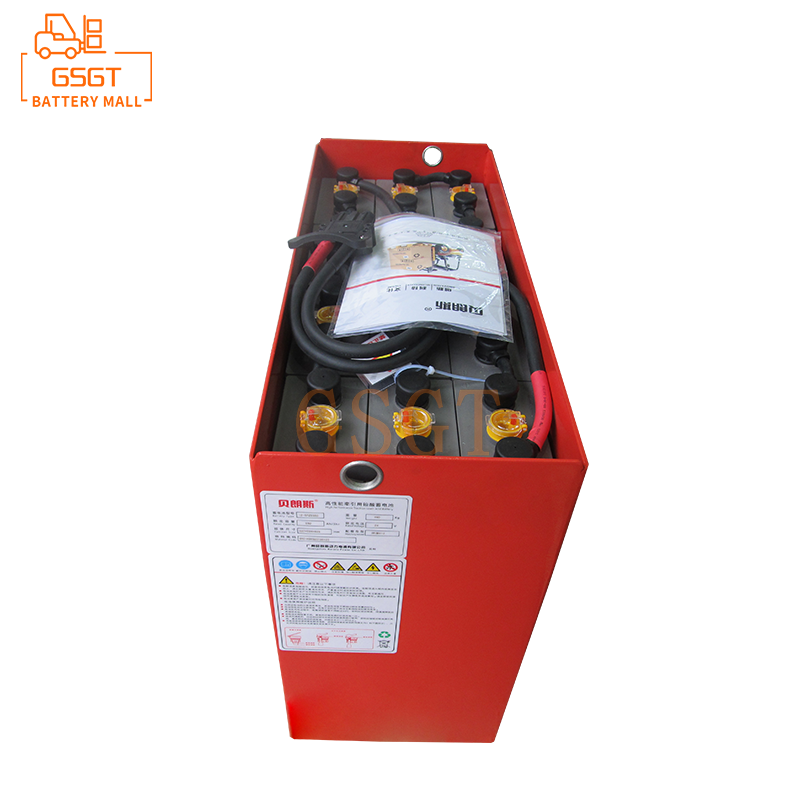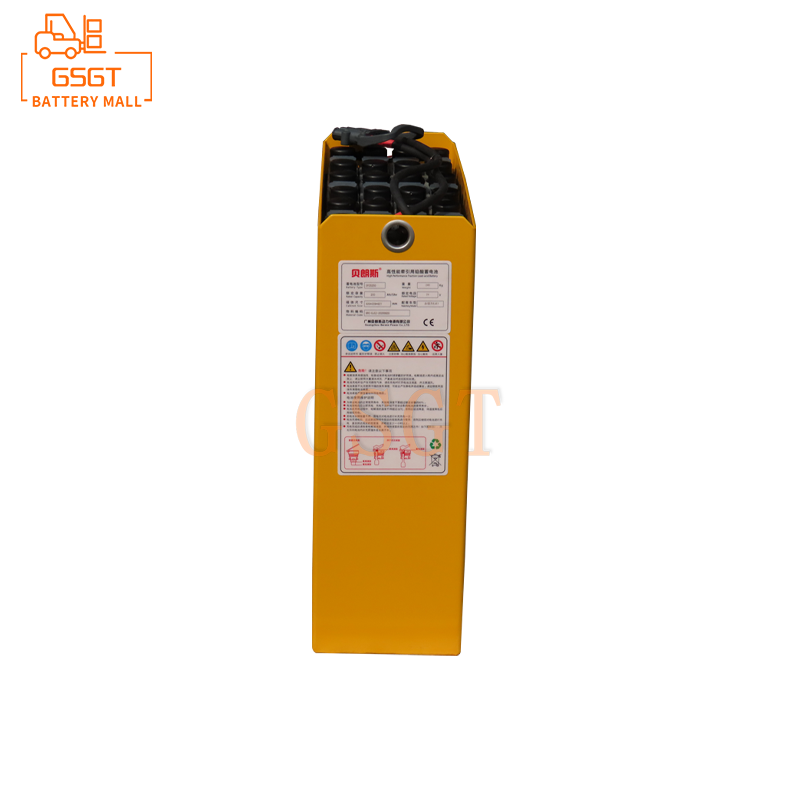Time:2025-04-09 10:15:46
Browse:579
In the field of industrial logistics, forklift as a key handling equipment, its power source - lead-acid battery maintenance and replacement is very important. After long-term use, the performance of the lead-acid battery will gradually decline, and when it cannot meet the normal working requirements of the forklift, it needs to be replaced. How to achieve low-cost and high-efficiency replacement of lead-acid batteries under the premise of ensuring the normal operation of forklifts has become the focus of attention of many enterprises.
1. Comprehensive evaluation and planning before replacement
(1) Battery life diagnosis
Before deciding to replace the forklift lead-acid battery, it is necessary to accurately determine whether it really must be replaced. Key parameters such as capacity and internal resistance can be measured by professional battery testing equipment. For example, when the battery capacity is less than 80% of the rated capacity, and after several deep charge and discharge cycles can not be recovered, while the internal resistance is significantly increased, resulting in the forklift starting difficulties, the working time is greatly shortened, it is basically determined that the need for replacement. At the same time, observe the appearance of the battery for signs of serious damage such as bulging and leakage, and these intuitive phenomena are also an important basis for judgment.
(2) Forklift work demand analysis
Different forklift application scenarios have different requirements on battery performance. If the forklift works in low temperature environment such as cold storage, the battery needs to have good low temperature starting performance and continuous discharge ability; In the frequent short-distance handling operation, the fast charge performance and cycle life of the battery are more critical. The factors such as the working environment temperature, working time, weight and frequency of handling cargo of the forklift are sorted out in detail to provide a basis for the selection of suitable new batteries to avoid performance waste or failure to meet work needs due to improper selection.
(3) Make a replacement plan
According to the use of forklift arrangements, choose the appropriate replacement time. Try to choose the off-peak period of forklift use, such as weekends or plant equipment maintenance downtime to replace, to minimize the impact on normal production operations. Plan the replacement process in advance, and clarify the time node and labor division of each step. For example, arrange special personnel to remove old batteries, transport new batteries, and install and debug new batteries to ensure that the replacement process is carried out in an orderly manner. In addition, prepare required tools, such as wrenches, screwdrivers, and lifting devices (if batteries are heavy), and check the integrity of the tools to prevent tool delays.
2. The choice of cost-effective battery
(1). Market research
Extensive collection of forklift lead-acid battery information of different brands and models in the market. Through the network platform, industry forum, product catalog and other channels, understand the price range of each product, performance parameters, user evaluation, etc. Focus on some brands with good reputation and outstanding cost performance. At the same time, pay attention to market dynamics, understand whether there are recent manufacturer promotional activities, new products and other information, in order to seize the procurement opportunity of price concessions.
(2) Performance and price balance
When choosing a battery, you cannot simply pursue low prices. Batteries that are too low in price may have defects in performance and quality, resulting in short service life and high maintenance costs, but increasing the overall cost. It is necessary to comprehensively consider the relationship between the capacity, cycle life, charging and discharging efficiency and other performance indicators of the battery. In general, the larger the capacity, the longer the cycle life of the battery price is relatively high, but from the long-term use cost point of view, it may be more cost-effective. For example, a battery with a slightly higher price but a cycle life 50% longer than an ordinary product can effectively reduce the number of replacements and reduce the overall cost in the case of high-intensity forklift use.
(3) Consider after-sales service
High quality after-sales service can provide guarantee for later use. Choose a manufacturer or supplier that offers a long warranty period and responds to repair services in a timely manner. During the warranty period, if there is a quality problem with the battery, the manufacturer can replace or repair it free of charge to reduce the loss of the enterprise. At the same time, know whether the supplier provides technical support, such as battery use training, fault diagnosis guidance, etc., to help enterprises better use and maintain new batteries.
3. Efficient replacement process implementation
(1) Safety protection and preparation
Before replacing a battery, take safety measures. Wear protective equipment, such as insulation gloves and goggles, to avoid electric shock or battery electrolyte splash. Turn off the power to the forklift and ensure that the forklift is in a stable parking state to prevent movement during the replacement process. Use warning signs to isolate the replacement area, prevent irrelevant personnel from approaching, and ensure the safety of operation.
(2) Old battery disassembly
Remove the old battery in the correct order. First, loosen the nuts on the positive and negative terminals of the battery using a wrench. Remove the negative terminals first and then the positive terminals to prevent a short circuit caused by accidentally touching metal components during the removal. After removing the cables, carefully remove the old battery from the battery compartment of the forklift using a lifting device, such as the forklift fork or a professional battery lifting device. During the lifting process, ensure that the battery is stable and avoid shaking or falling. For some heavy battery packs, multiple people may be required to complete the disassembly to ensure safe operation.
(3) New battery installation
Place the newly purchased lead-acid battery into the forklift battery compartment smoothly, and pay attention to the positive and negative directions of the battery to be consistent with the forklift circuit connection mark. Use the lifting device to fine-tune the battery position to ensure that the battery is properly installed and secured. When connecting battery cables, connect the positive terminal first and then the negative terminal, and tighten the terminal nut to ensure that the battery cables are firmly connected and in good contact with each other. Otherwise, the battery performance and forklift operation may be affected as a result of poor contact.
(4) Debugging and inspection
After the new battery is installed, perform preliminary commissioning. Switch on the power supply of the forklift, and observe whether the battery power display and charging indicator on the instrument panel are normal. Start the forklift and carry out a short-distance no-load test run to check whether the starting performance, acceleration performance and steering performance of the forklift are restored to normal. At the same time, check whether there is any sign of leakage around the battery compartment, and whether the battery connection part is abnormal. If any problem is found, stop the car in time for inspection, and then continue to debug and use after troubleshooting.
4. Follow-up maintenance and cost control
(1) Correct charging
The newly replaced lead-acid battery should be charged in a correct way. Follow the manufacturer's recommended charging parameters to control the charging current and charging time. Avoid overcharging and overdischarging, which will cause the battery to heat up and lose water, shortening the battery life; Excessive discharge will vulcanize the battery plate and damage the battery. The intelligent charging device can automatically adjust the charging parameters according to the battery status, improve the charging efficiency and extend the battery life.
(2) Regular inspection
Regularly check the lead-acid battery of the forklift, including the appearance check for leakage and bulge, whether the terminal is corroded, and whether the electrolyte level is normal. Periodically measure the battery capacity, internal resistance and other parameters to master the performance changes of the battery. If the problem is found, handle it in a timely manner, such as adding electrolyte and cleaning terminals, so as to prevent small problems from developing into major faults, affecting the battery life and normal operation of the forklift.
(3) Cost accounting and analysis
Establish a sound battery cost accounting system to record the cost of new battery procurement, labor costs in the replacement process, tool and equipment loss costs and later maintenance costs. Analyze cost data regularly to find out the key points of cost control. For example, by comparing the service life and overall cost of different brands of batteries, evaluate whether the early selection is reasonable; Analyze the composition of maintenance cost, optimize maintenance measures, reduce unnecessary expenses, and realize the effective control of the replacement and use cost of forklift lead-acid battery.
Low cost and high efficiency replacement of forklift lead-acid batteries needs to start from the accurate evaluation and planning before replacement, the selection of cost-effective batteries, the implementation of efficient replacement process and subsequent maintenance cost control. Only by fully controlling these links can enterprises ensure the normal operation of forklifts, reduce operating costs, improve production efficiency, and occupy an advantage in the fierce market competition.

$1105

$2045

$480

$1145

MESSAGE
Professional And Efficient
Security
Affordable Price
Professional Services